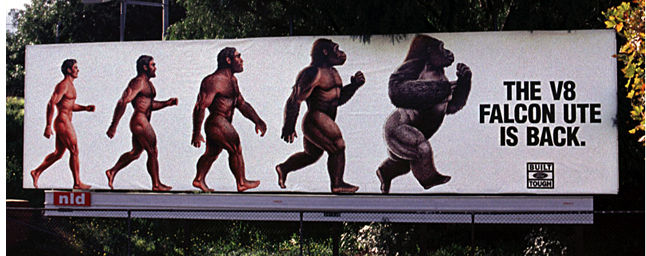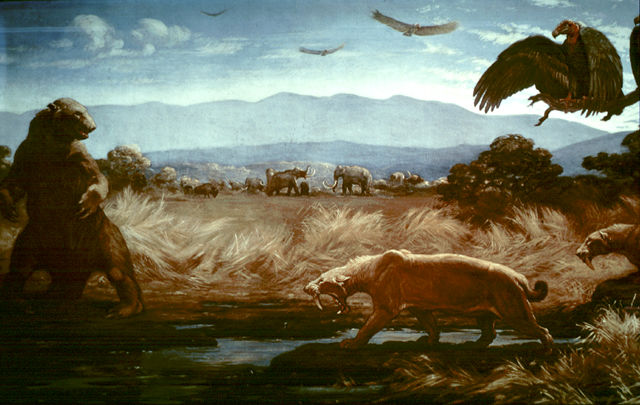|
The natural history museum's problem is that it has chosen to confuse its internal taxonomic function, with its public didactic function. The traditional layout of natural history museum, places life in an evolutionary chain that begins with amoebas and ends of course with Homo sapiens. Evolution is seen as a chain of teleological events, ending with its ultimate achievement — us (who is usually male). Implicit in this didactic is the imposition that humans are the natural ascendancy of biological evolution; that our evolution was inevitable; and that there are scientific grounds for humanity's moral superiority over all other species of life on earth. All of course, false.
|
 |
|
It is little wonder then, that we see billboards like this. A pop cultural mirror on the museum. Indicative, I feel, of how we define and reference nature in our culture. It is also little ironic then, that a biologist like Stephen Jay Gould should complain so vehemently about societies misunderstanding of evolution, while the institutions he represents are given primary responsibility to enlighten such views[1]. Consider even this simple fact: that if a natural history museum's exhibition area was divided by assigning the spatial area proportionally to the temporal duration of each species, from the first prokaryotes to homo (following the traditional "chain of evolution"), then more than half the exhibition space would be devoted to single celled organisms that cannot be seen with the naked eye, and that humans would be lucky to have enough room for a single specimen of a human eye within the standard size of most museums.
|
 |
|
There is something increasingly distant about images like this, apart from the yellowing of the bromide of this life-size frame, dramatically backlit in the George C. Page museum. This is the "nature" of evolution — a hostile environment where every individual struggles to survive, where nature, red in tooth and claw (literally in this image) is defined only in terms of those species large enough (in terms of both size and pathos), to be depicted [2]. As this dramatic scene shows, each species in the food chain is poised, unrealistically close and attentive, only moments away from death. Images like these struggle with the enigma of time. The time the image was created; the time depicted within the image; and the time that passes attempting to tell a story within a frozen frame. In a way these images are trying to show what is impossible: they want to escape the physical, temporal and contextual frame that surrounds them. |
